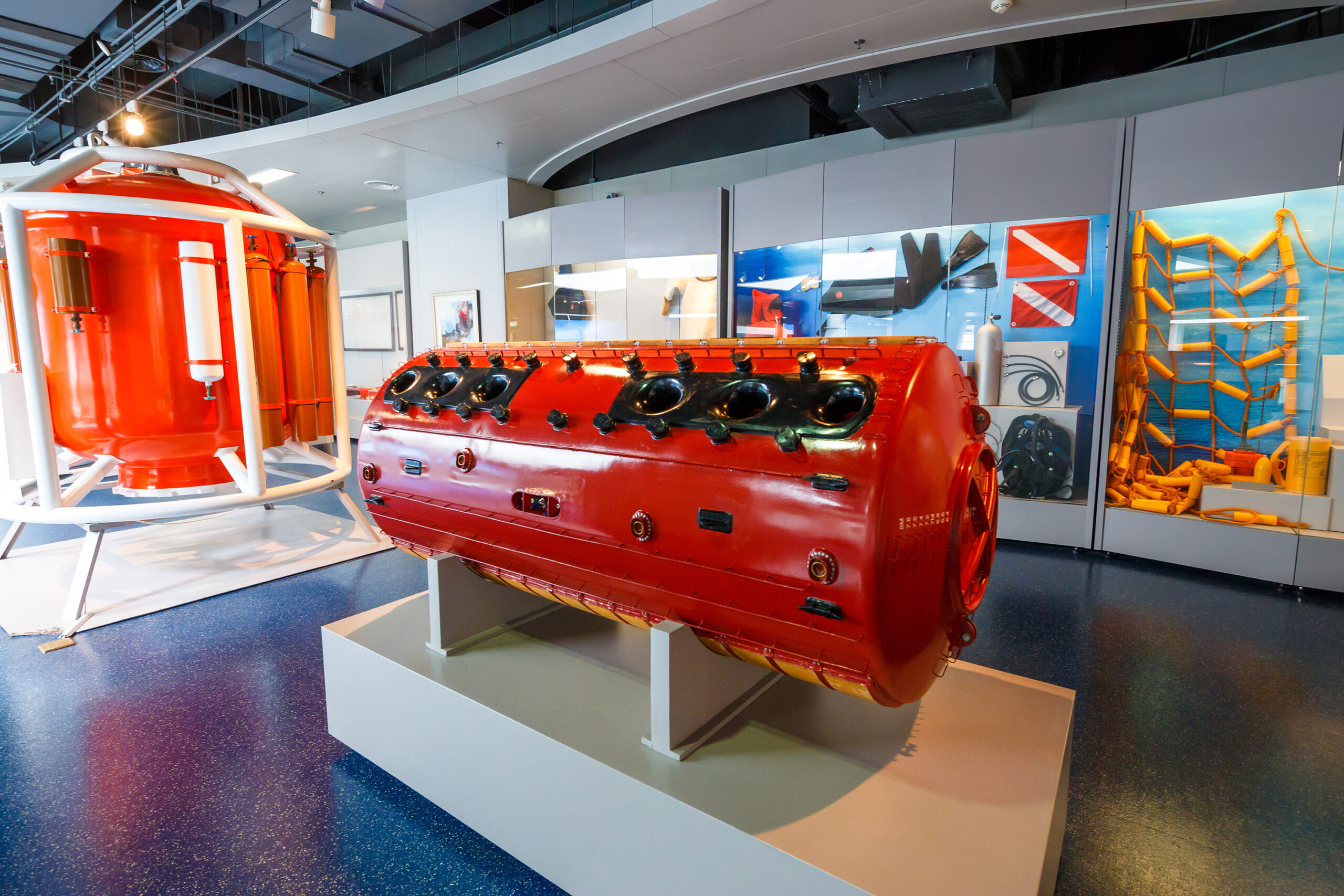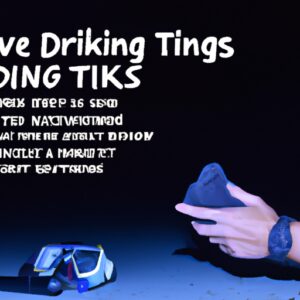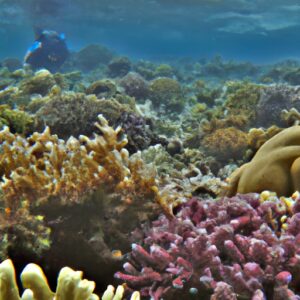
The Pressure chamber for marine diving
Scuba diving is an incredible and exhilarating experience that every adventure-seeking individual should try. There’s nothing quite like the feeling of weightlessness you experience while exploring the beauty of the underwater world. But with anything adventurous comes caution, and in this case, it’s the risk of injuries. So, what are the most common scuba diving injuries, and how can you prevent them? Let’s dive in!
EAR/SINUS SQUEEZES
Have you ever felt intense pressure in your ears while diving? If so, you’re not alone. Ear pain, technically called barotrauma, is one of the most common injuries divers experience. Barotrauma results from differences in pressure between a body airspace and surrounding environment. This pressure difference leads to The pressure changes underwater can cause a buildup of pressure in your ears, leading to discomfort, pain, and even ruptured eardrums.
Barotrauma is an injury to soft tissues that results from a pressure difference between the inside of the body and the surrounding air. This can happen in various parts of the body and can cause injury due to expansion or contraction of a space.
Here are some signs and symptoms of ear squeeze:
– A ‘fullness’ feeling in the ears (like there is water inside)
– Blood or watery fluid oozing from ear-Dizziness, nausea, or vertigo (giddiness)
– Loss of hearing, muffled hearing, or tinnitus (ringing in the ears)
– Painful to swallow
– Severe pain in one or both ears-Swollen (or redness) around the outside of the ear
The most common injury for divers is ear barotrauma, which occurs when the pressure in the middle ear space changes while diving, creating a pressure difference across the eardrum. The eardrum can bleed and even rupture. Divers must learn proper equalization techniques to avoid injuries. Paranasal sinuses are also susceptible to barotrauma during descent, with symptoms ranging from mild to severe, depending on the pressure changes.
Risk factors for ear and sinus barotrauma include medication use, ear or sinus surgery, and nasal deformities. Divers who suspect they may have ear or sinus barotrauma should discontinue diving and seek medical attention.
So, how can you avoid this? It’s simple. By equalizing the pressure in your ears. Here are a few tips to help:
– Descend very slowly and in a controlled manner
– Yawning and/or swallowing frequently as you pinch your nose
– Add air to your mask by exhaling gently out your nose
– Use earplugs or a hood
DECOMPRESSION SICKNESS
Every time you go for a dive, your body takes in nitrogen and then gradually releases it back out. This process of releasing nitrogen is known as decompression, and it occurs during your ascent to the surface. Decompression sickness, or “the bends,” is a potentially life-threatening condition that can occur when a diver ascends too quickly. When we dive, the nitrogen in the air we breathe dissolves in our tissues. Ascending too quickly can cause this nitrogen to form bubbles that can lead to serious health problems such as joint pain, fatigue, and paralysis
Here are some signs and symptoms of decompression sickness:
– Coughing spasms or shortness of breath
– Collapse or unconsciousness
– Personality changes
– Weakness
– Paralysis
– Numbness or tingling
– Dizziness
– Staggering, loss of coordination, or tremors
– Mottling or marbling of skin
– Loss of bowel or bladder function
– Itching
– Joint aches or pain
– Unusual fatigue
– Blood or watery fluid oozing from ear
– Dizziness, nausea, or vertigo (giddiness)
Unfortunately, many diving instructors, especially those who teach recreational diving, do not recognize this fact. As a result, they may not properly prepare their students for safe decompression procedures.
To calculate the amount of decompression time needed, your dive table or computer algorithm takes into account your depth and duration, which together estimate the amount of nitrogen absorbed by your body. This calculation determines the amount of time you have for a “no stop” decompression ascent.
To execute this “no stop” decompression, you must ascend at a controlled rate so that excess nitrogen can be released as you exhale. You cannot simply shoot up to the surface because this does not allow enough time for the nitrogen to safely exit your bloodstream and tissues.
Another technique you can use to reduce your risk of decompression sickness is the safety stop. The safety stop involves halting your final ascent at a depth of 15 feet (15 meters )for three minutes. This allows your body to slow the release of nitrogen prior to returning to sea level. to help off-gas the nitrogen absorbed while diving.
There are number of established risk factors may increase your risk to decompression sickness. These factors should be considered when planning a dive. If any of these apply to you, consider changing your plan in favor of a more conservative dive profile (shallower depths and or shorter dive times). Here is the list of risk factors:
– Lack Of Physical Fitness
– Increased Age
– Obesity
– Dehydration
– Physical Injury
– Alcohol Use During Diving
– Repetitive Dives
– Traveling To Altitude To Dive
To avoid decompression sickness, divers must follow strict dive tables (whether printed or calculated by a computer), slow ascent rates, consider the list of established risk factors (below) and make a safety stop at the end of the dive
MARINE LIFE STINGS
We all love the incredible marine life we get to see while diving, but some of them can be dangerous. Jellyfish stings or in medical jargon, envenomation, can cause intense pain and allergic reactions. Sharks can be dangerous, but in reality, they are rarely interested in humans.
Marine creatures often use toxins for self-defense or hunting. Envenomation can occur when these creatures inject their venom or toxin into a person through a bite, puncture, or sting.
Divers can be injured when entering or exiting the water or if they attempt to handle an animal. These injuries, though rarely life-threatening, typically cause:
– itching
– burning
– or irritation
Coral scrapes are the most common injury experienced by divers and snorkelers. These injuries can take weeks or months to heal without proper treatment. Spine punctures and stings are also common.
If you are injured, carefully remove the spine or stinger (unless it’s a stingray spine). Then, immerse the wound in non-scalding hot water at a temperature of 110-113°F (43.3-45°C) to tolerance.
Divers of all levels should get first-aid training and be prepared to respond to diving injuries, including those caused by marine life.
Seek immediate medical care if the injured diver is:
– weak
– vomiting
– short of breath
– acting intoxicated
Most diving injuries are preventable. Breathe constantly, equalize regularly, avoid contact with marine life, and ascend slowly. Share this article with fellow divers and support dive safety research by joining Divers Alert Network (DAN), which offers 24/7 emergency medical assistance for divers worldwide.
To avoid marine life injuries, respect the wildlife, and always keep your distance. Wear protective gear when appropriate, such as gloves and wetsuits to avoid jellyfish stings, and always follow instructions from local dive guides.
In conclusion, injuries can happen while diving, but the good news is they are entirely preventable. Follow proper protocols, take necessary precautions, and be vigilant at all times while exploring the underwater world. Diving is an incredible adventure, and by taking care of yourself, you’ll be able to enjoy it safely for years to come. Happy diving!







